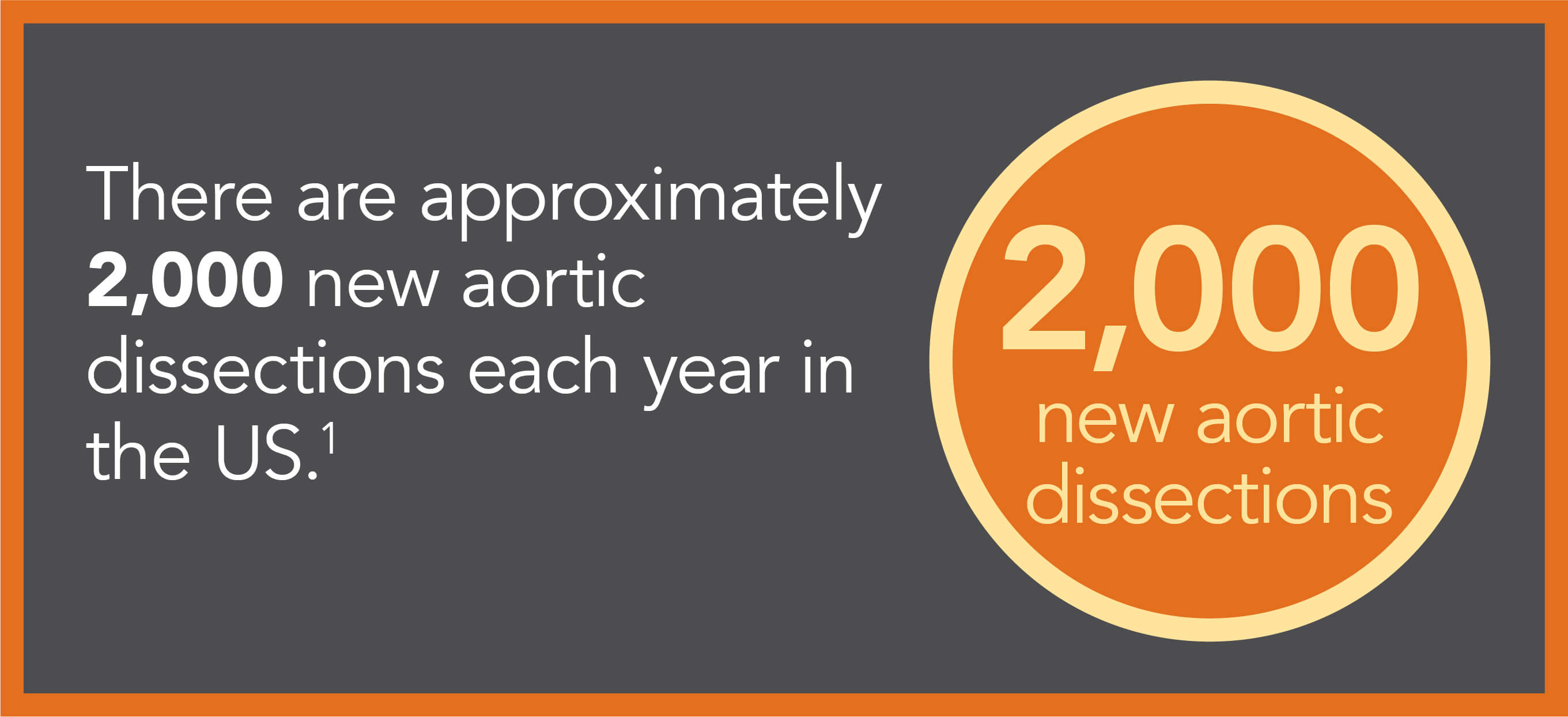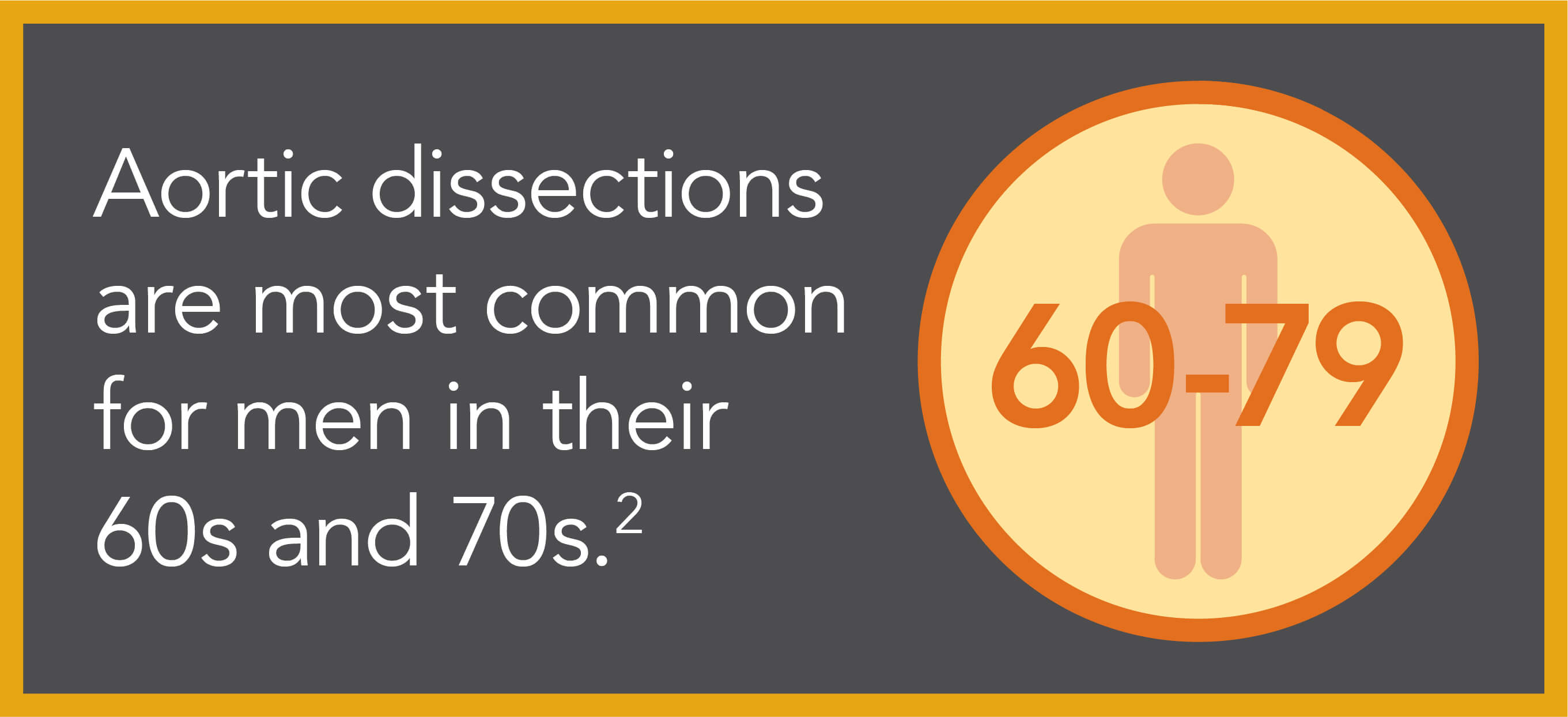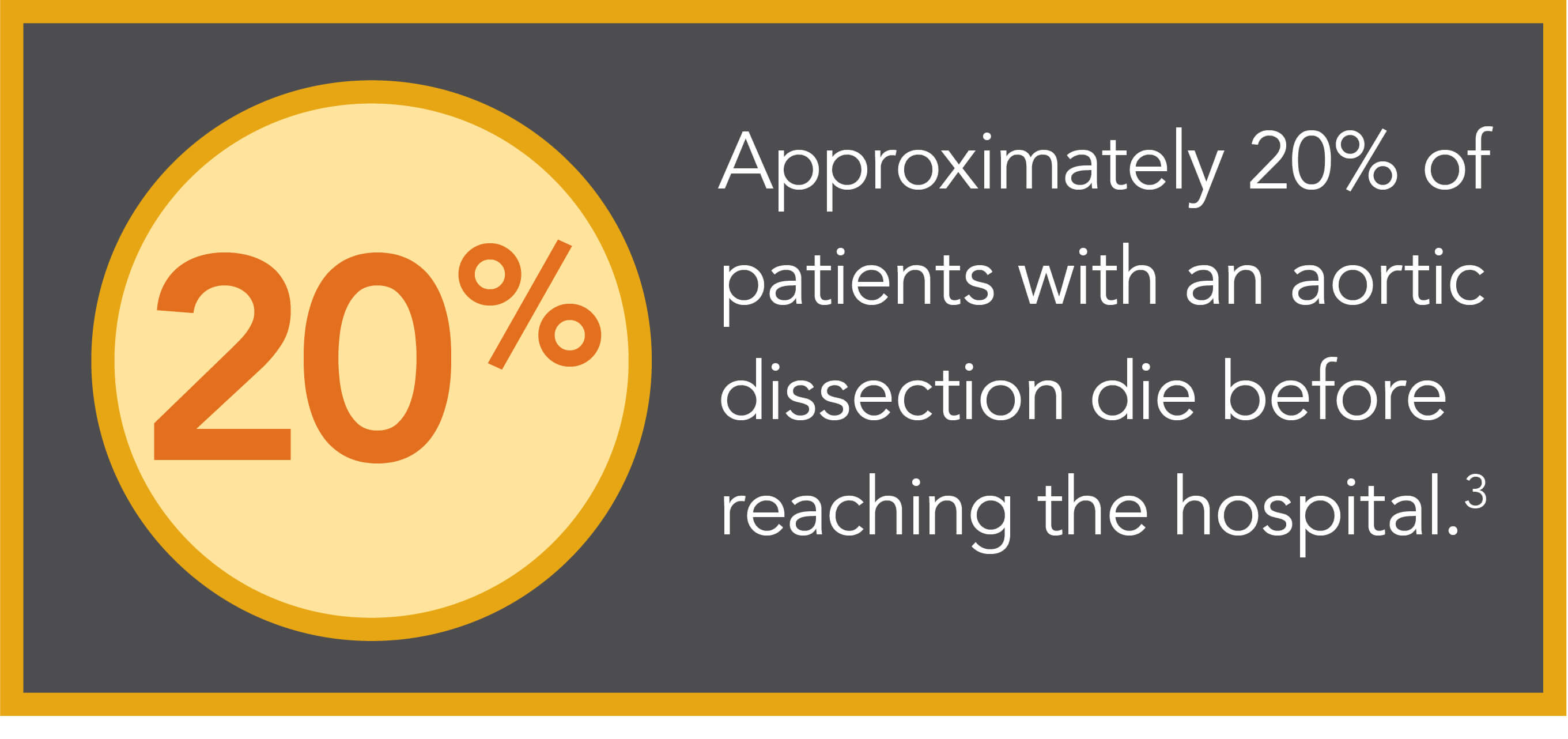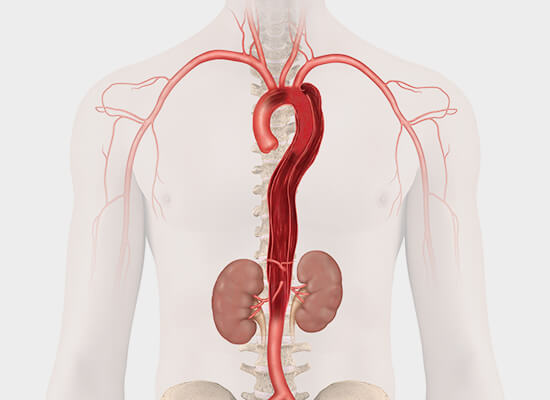







A thoracic aortic dissection occurs in the part of the aorta— the main blood vessel that carries blood from the heart to the rest of the body— that runs through the chest. Sometimes, with aging or other changes, a section of the aorta may weaken and tear, causing the layers of the aorta to come apart. As blood flows through the tear between the layers of the aorta, the aortic walls separate. This is called a dissection.
There are two types of aortic dissections: an acute aortic dissection and a chronic aortic dissection. An acute aortic dissection is a potentially life-threatening condition that requires diagnosis immediately after symptoms appear in order to get the right treatment. A chronic aortic dissection is an aortic dissection that has been present for a longer period of time. However, if blood continues to flow through the tear between the layers of the aorta, it could form an aneurysm.

An aortic dissection happens suddenly. The tear is thought to
be caused by the pressure of blood flow on a diseased, or
weakened, section of the aorta combined with the repeated
motion and force of the heart beating 37-40 million times per
year.
Risk factors for developing a thoracic aortic dissection include
the following:
Symptoms of an aortic dissection typically occur soon after the tear develops. The most common symptom is chest pain. Patients describe a very sharp or tearing pain in either the front or the back of their chest, most often between the shoulder blades. The pain occurs suddenly and is commonly described as a patient’s “worst pain ever.”
Other symptoms include, but are not limited to, the following:
Links for additional resources on aortic dissections:
Remember, every patient is different, and your doctor knows you best. After reading the information on this site, make an appointment to talk to your doctor to help you make the right decision about any treatments or procedures.